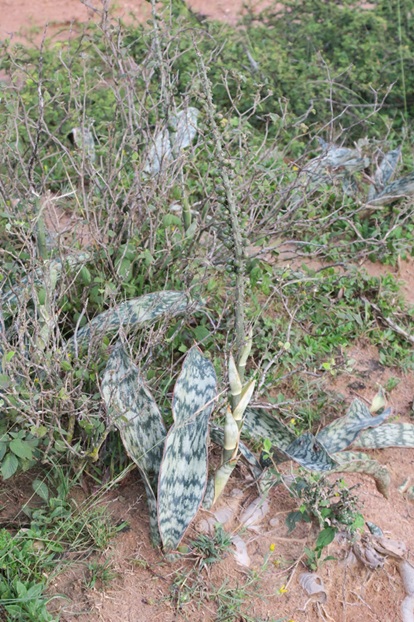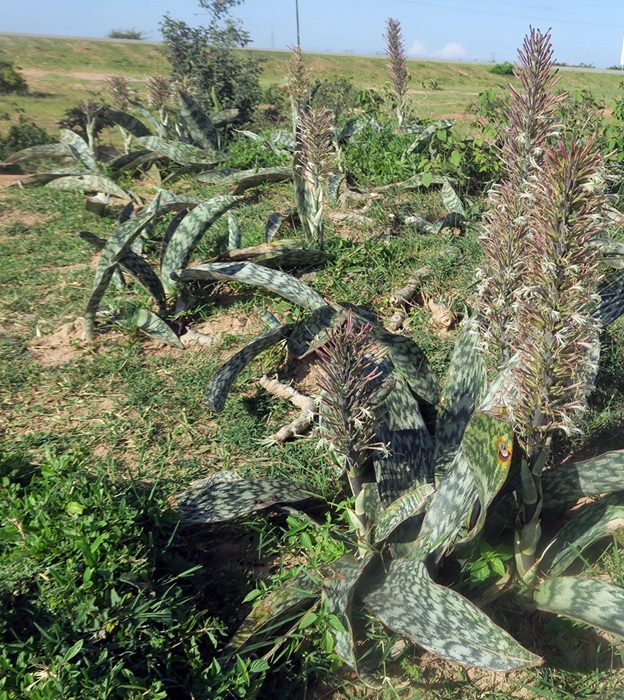| |
Sansevieria nebrownii R. H. Webb |
| Protologue: |
Sansevieria 53: 27-28 (2024). |
| Subgenus: |
Sansevieria |
| Group: |
Sansevieria elliptica |
| Etymology: |
This species is named for the N.E. Brown, who wrote the first monograph on the genus Sansevieria in 1915. |
| Distribution: |
North-central Tanzania in the region southeast of the Serengeti Plains. |
| Brief Description: |
This acaulescent, broad-leaf rhizomatous species with 1-3 lanceolate leaves 50 cm long, 15 cm wide, and narrowly guttered. The leaf base is slightly narrowed, and the leaves may be erect, spreading, or recurved, usually bending near the midpoint. The smooth medium-green leaves have a reddish margin, are vaguely guttered, and taper to an acute but soft tip. The inflorescence is simple, 90 cm tall, and it is densely covered with 5-6 violet white flowers per cluster. |
| Similar Species: |
Sansevieria nebrownii is related to other East African species, particularly Sansevieria rugosifolia (which is much taller and darker green), and S. forestii, which again has greener leaves and is only known from southern Kenya. This species has a preference for deep shade on termite mounds. It clearly belongs in the Sansevieria elliptica group owing to the low number of roughened leaves. |
| |
| |

Sansevieria nebrownii in habitat west of Singida, Tanzania.
|
| |

Sansevieria nebrownii flowering in habitat west of Singida, Tanzania.
|
|
| |
| |
|
|
| |
| |
|
|

